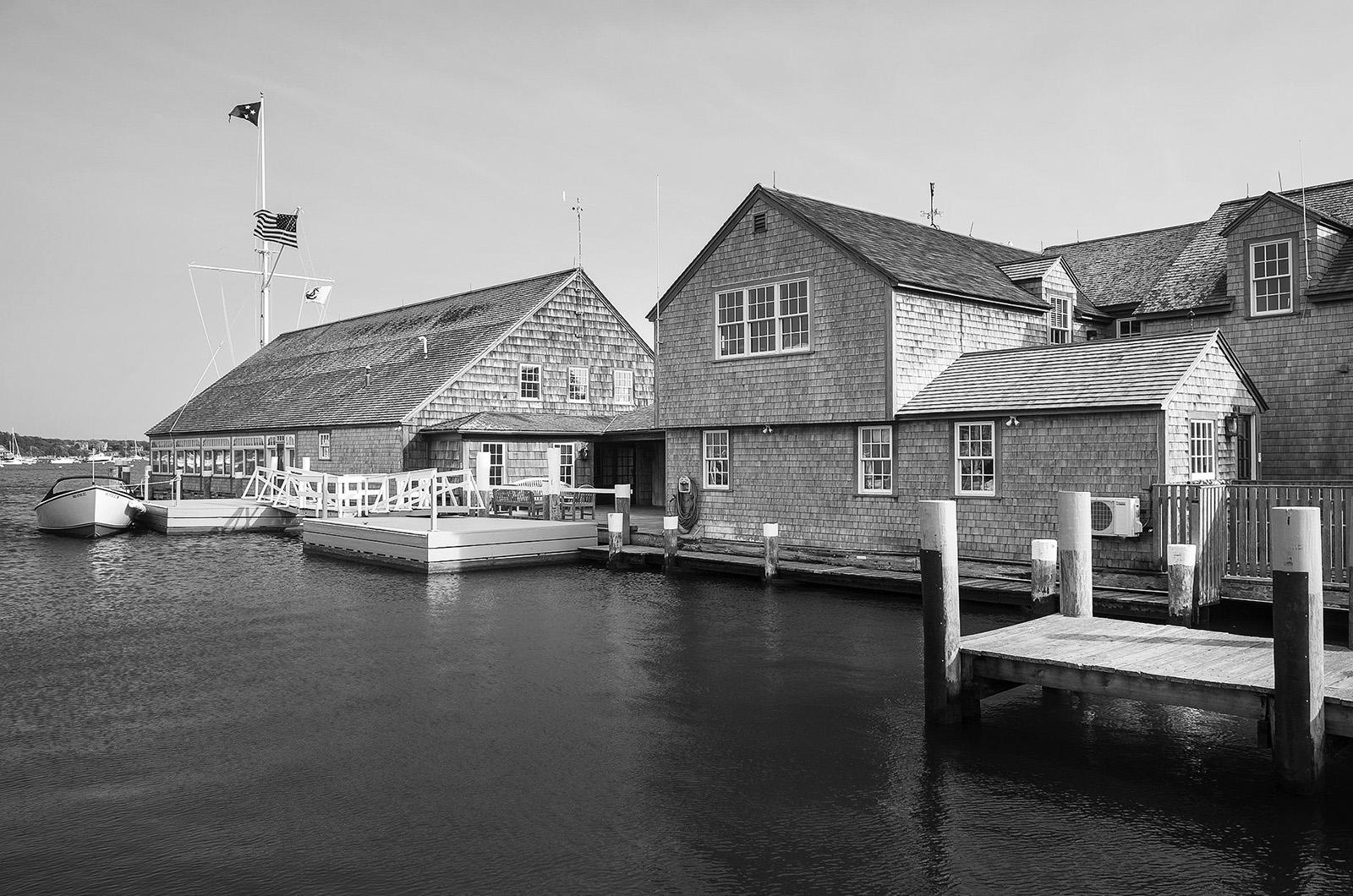From the Oct. 7, 1966 edition of the Vineyard Gazette, by Edith Blake:
Eldridge’s Fish Market which has stood for so long at the foot of Main street in Edgartown, poetically speaking, has been a sort of bulwark between the commercial part of town and the wonderful world of the waterfront. It has been part of the vast fishing industry of the New England coast. Perhaps it has meant most to the fishermen of the town for whom it became one of the last remaining places on the Island where men gather in the evenings to spin long tales in front of the classic potbellied stove. They gathered to sell fish, harangue about politics, bemoan about the weather — “which ain’t the way it used to be” — and to stand by the hour on a wet floor in black rubber boots, shucking scallops.
The recent sale of Eldridge’s to the Edgartown Yacht Club will be felt most by these men. It will be felt by the sentimentalists and the historians who will mourn another passing era; it will be felt by the buyer who can no longer order fresh fish, or cooked and picked lobster delivered to his back door; but most of all it will be missed by John L. Correia.
Eldridge’s started operations in Edgartown somewhere between 1924 and 1926. In 1928 Mr. Correia went to work there. He was obviously a man to talk to, with several hundred handy fish tales.
When this reporter arrived at the market Mr. Correia was energetically hanging on to a length of Manila hemp line, hanging from a trap door on the ceiling and relaxing against the wall. He informed us that we were not interrupting anything at all important. In answer to the question of how it all started and did he have any fish stories he replied that he had been born and raised on the Island, but had never had any distinct leaning toward fish.
“I’de been off-Island,” he said. “When I got back I met Heck Benefit who asked if I was looking for a job because Charlie Johnson needed someone. Well here I am after — how many years later.
“I’ve worked under three bosses right here in the same place, and the Yacht Club will be the fourth. Let’s see, first there was old L. S. Eldridge, then Harriet Eldridge and now George Eldridge.
“When I first started, all the fishing was done from the waterfront shanties. They went from here to Phil Norton’s wharf and Clarence Collins had a shanty at the Reading Room. There were several shanties on the Coal Wharf, too. I don’t know what happened to them, I guess hurricanes.”
Scallops appeared to be unlimited in those days, and the shanties were always full. There seemed to be more left in the water when they stopped then, than there are now when they start.
Inside the shanties, scallops would be stacked up the bench with another stack under the bench and another stack in the boat. When they had shucked those on the bench they would move up the pile underneath, and put the pile from the boat under the bench. It was a lot more work, and sometimes they prayed for bad weather so they could catch up on the shucking.
“The industry has gone down hill. Last year was the best in many years.”
“When I first came here the market bought 50 or 60 barrels of quahaugs a day. Mostly they were shipped on to New York, We knew we would probably get stuck. There were so many around and no money. Today it’s just the opposite. During the depression we paid as low as $1 a bushel for littlenecks, and 50 cents for mediums or chowder clams. For the past three years we’ve paid $16 a bushel for the necks.”
“The first few years I was with Eldridge’s,” said Mr. Correia, “I bought scallops on the Cape, but the winter Gay Head had a big year I was sent back here. When Charlie finished I took over as manager. But when I was in New Bedford, gosh, they had quahaugs. Most of them went to the Campbell Soup Company. I have seen the time when we bought 600 barrels for Campbell’s. They get them somewhere now; they still must be making chowder.
“It’s hard to operate a wholesale place on the Island without a connection on the mainland. It’s impossible.
“A good way back I have sold lobster from 35 cents and have seen them go to $2.25 a pound, and swordfish from 25 cents up to $1.75. I’ve paid as low as 25 cents for a bushel of clams for the clam bar. They started selling for 25 cents a dozen and kept going up to $1 a dozen.
“Of course the low prices were during the depression. What a time that was. Everett Poole’s grandfather used to say ‘When you make nothing you can’t save anything. If you make a lot you can do without something, so you can save.’ I have remembered that all these years.”
As he finished speaking he leaned back against the wall, grabbed the same length of hemp hanging from he ceiling and grabbed his pipe and said, “if the fish market had closed years ago, it would have been a hardship for the town. Now it will be missed for a while. But in some way such an institution will come back.”
Compiled by Hilary Wallcox




Comments (1)
Comments
Comment policy »